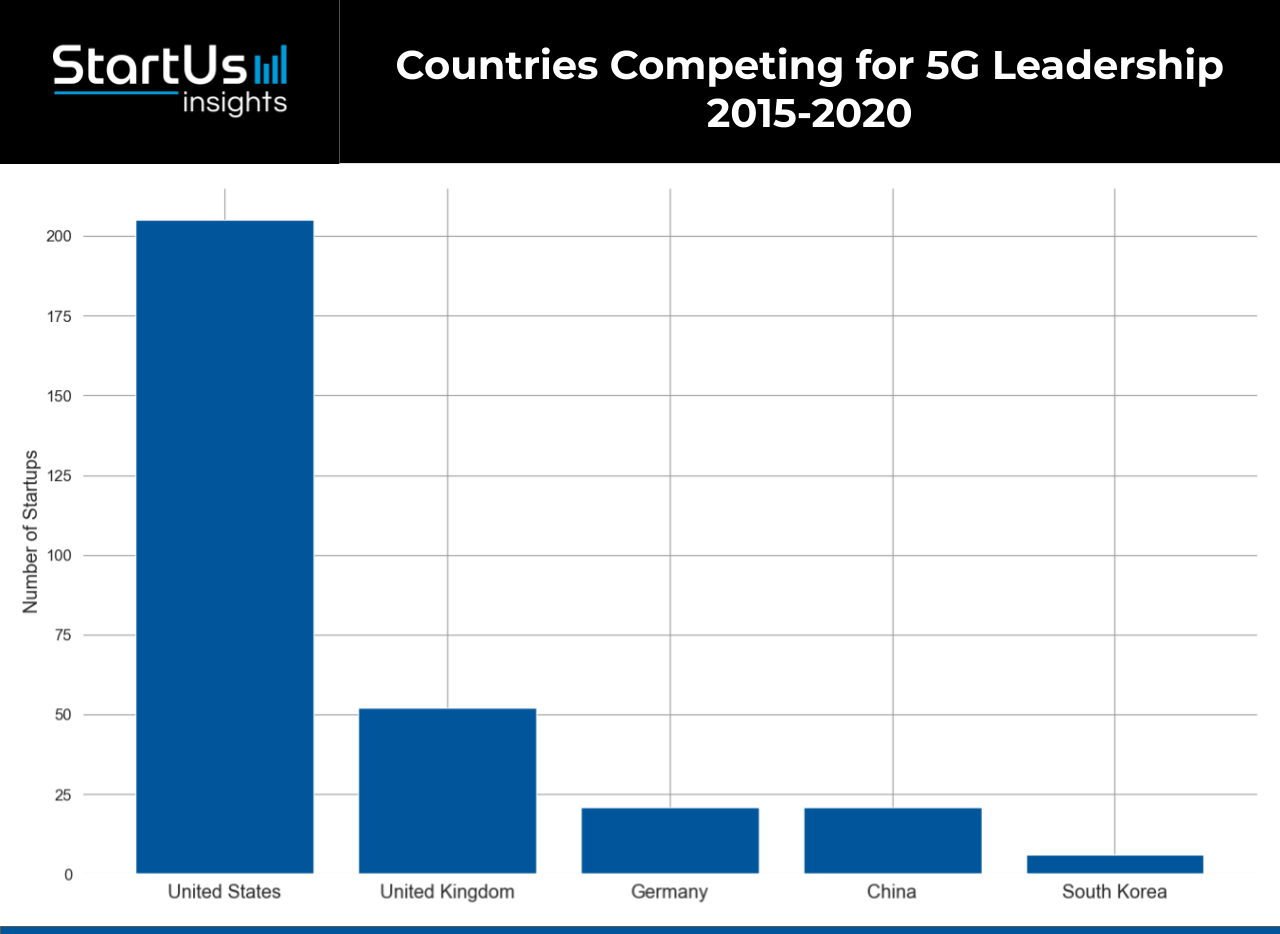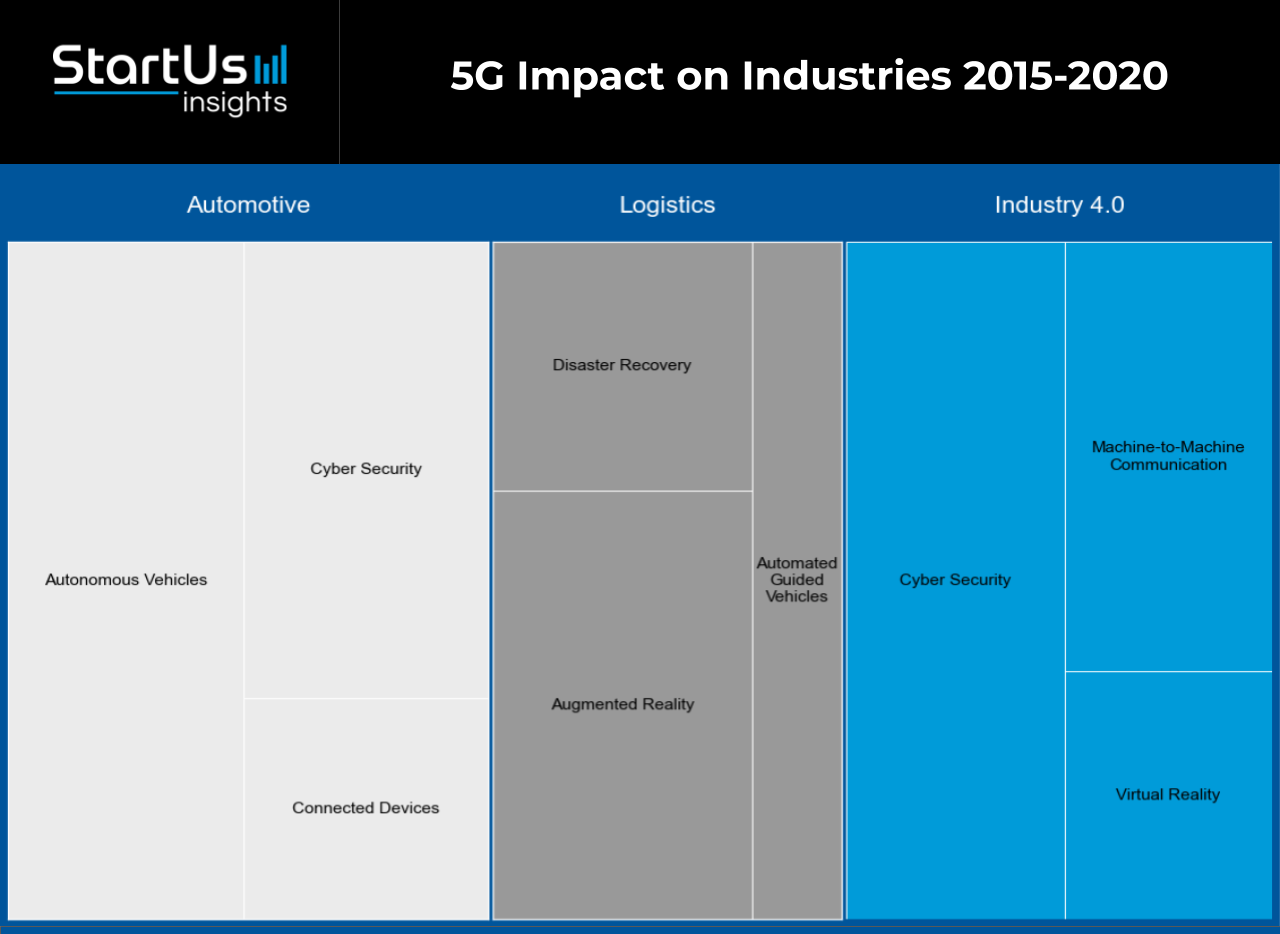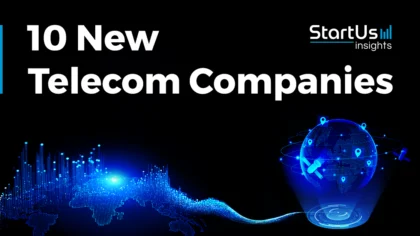The 5th generation of mobile network communication provides low latency, high broadband, and fast speed to improve the availability and reliability of wireless data transmission. The technology is meant to connect more users and bring about a better user experience. 5G expands connectivity solutions for many industries, as well as creates new services. Although for now, 5G may not have enough coverage to release its full potential, the technology has been developing rapidly in 2020. More countries deployed the networks and both established companies and startups developed new solutions and applications for 5G.
As a company with a mission to map the world’s information on innovations, emerging companies, and technologies, we routinely look into emerging solutions that impact lives globally. To discover innovations in telecommunications tech, we used the StartUs Insights Discovery Platform, covering over 1.3 million startups & scaleups globally, to identify emerging companies that develop 5G technologies.
Heat Map: 600 Startups Developing 5G Solutions
We looked at the global geographic distribution of 600 5G startups & scaleups. The Global Startup Heat Map above gives you a clear picture of where the major hubs are, as well as up-and-coming regions that show significant activity. Telecom startups working on 5G technologies are primarily located in the United States: California and New York. Another major hub is centered in London, UK. And a high number of 5G startups & scaleups operate from Germany, China, the Netherlands, and India as well.
How did 5G Technology Develop?
Although the idea of hyperspeed wireless internet with negligible latency is not a novelty, the 5G technology was first defined in a 2015 white paper published by The Next Generation Mobile Networks (NGMN) Alliance. Over 2015 and 2016, 5G technology went through testing and pre-studying. In 2017, 3GPP set up the standards for 5G and the technology trials began. The year 2019 kicked off a race between South Korea, the US, and China for the leadership in 5G commercialization. In 2020, world countries picked up the speed in deploying 5G, and over 1 billion people will have access to 5G by the end of the year according to a recent report by Swedish telecommunications company Ericsson.
5G Adoption Across the World
Because 5G networks are cellular, the strength of the technology comes from the network coverage. In 2020, countries around the world were quick to deploy commercial 5G New Radio (NR). Currently, most European and East Asian countries, as well as such major countries as the US, Canada, and Australia have access to 5G technology, with the rest of the world picking up the pace in deployments. Additionally, telecom companies in many countries such as Russia and Madagascar experience pre-commercial deployments. When it comes to the number of cities where 5G is available, South Korea, China, and the US take the lead.
Race for 5G Leadership
The disruptive potential and the popularity of 5G are massive. This is why even countries compete with each other for the prestige of being called the 5G leader. April 2019 saw a manifestation of the race when US-based Verizon rescheduled the launch of their 5G networks one week ahead of plans to snatch the victory from South Korean telecommunications companies. However, the latter managed to race against the clock and snub Verizon’s launch by a few hours. Currently, the US and South Korea, as well as China, lead the way in 5G deployments. China also took a major blow in the competition when its telecom giant Huawei was accused of spying on users through its 5G equipment on behalf of the government.
However, when it comes to the number of startups developing 5G technology, the US has a massive lead. The United Kingdom comes up as a runner-up, leaving South Korea trailing behind. One of the South Korean startups, WARP Solution, provides radio frequency (RF) power amplifiers for 5G networks and wireless charging.
5G Enhances Network Connectivity Across Industries
Using our Discovery Platform, we analyzed the impact of 5G startups & scaleups on automotive, logistics, and Industry 4.0. The technology enables the widespread development of autonomous vehicles, disrupting the automotive industry. Additionally, 5G connects and secures vehicles and devices. 5G in logistics is applied for disaster recovery processes and the operation of automated guided vehicles (AGVs). The connectivity and speed of 5G enable cybersecurity and machine-to-machine communication for Industry 4.0. The low latency and high bandwidth of 5G technology also enhance the adoption of augmented and virtual reality across industries. Leveraging 5G technology, Polish startup 1000 realities, for example, offers AR/VR services for industrial, logistics, and automotive companies, as well as for the healthcare and entertainment sectors.
Funding for 5G Use Cases Across Industries
According to our data on 5G funding, companies developing solutions for logistics outraise others, with $2.8B raised in total over the last 5 years. Close behind, startups developing solutions for Industry 4.0 and automotive use cases have raised $2.3B and $1.9B respectively since 2015. Australian startup UCOT, developing 5G, IoT, artificial intelligence (AI), and blockchain solutions for supply chain management, has become one of the top investment targets. 5G also finds applications in other industries, including energy and healthcare.
Comparison of 5G, Light Fidelity (Li-Fi), and Fiber-Optic Communication
The Li-Fi technology, which uses light signals for transmitting information, and fiber-optic communication pose competition to 5G. We have looked at the number of startups, investments, and the popularity of each technology. The 5G technology leads the field in all three categories. However, The activity of startups developing fiber-optic solutions is not so far beyond. Much fewer startups develop Li-Fi technology, for example, US-based startup SaNoor offers high bandwidth laser Li-Fi solutions for communication and entertainment. 5G startups raise on average $10M more than startups developing optical fiber solutions, whereas Li-FI startups raise on average $7.3M. Regarding the popularity of these technologies, 5G also leads the two competitors by large margins.
What does 5G do for you?
The initial months of 2020 saw a slowdown in 5G deployment due to disrupted supply chains and mandated lockdowns. However, the pace of the 5G deployment recovered completely in many countries, showing excellent results. Automotive, logistics, and Industry 4.0 startups & scaleups are already benefiting from 5G. The high bandwidth and low latency of 5G allow remote control of a large number of Internet of Things (IoT) devices. This enables applications that require real-time network performance data.
Regardless of your industry and the solutions you are looking for, we will provide you data-driven insights into all the promising startups and technologies. By separating the noise from the signal, you can choose the right innovations for your business.













